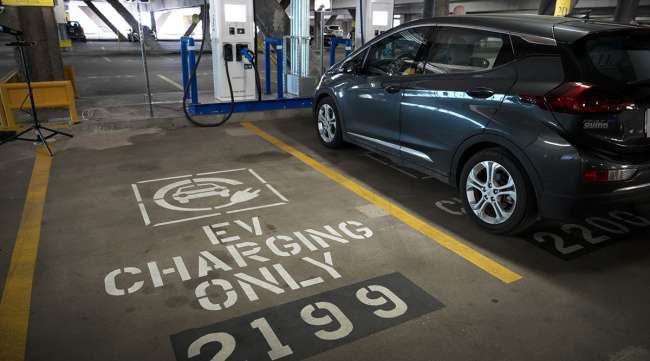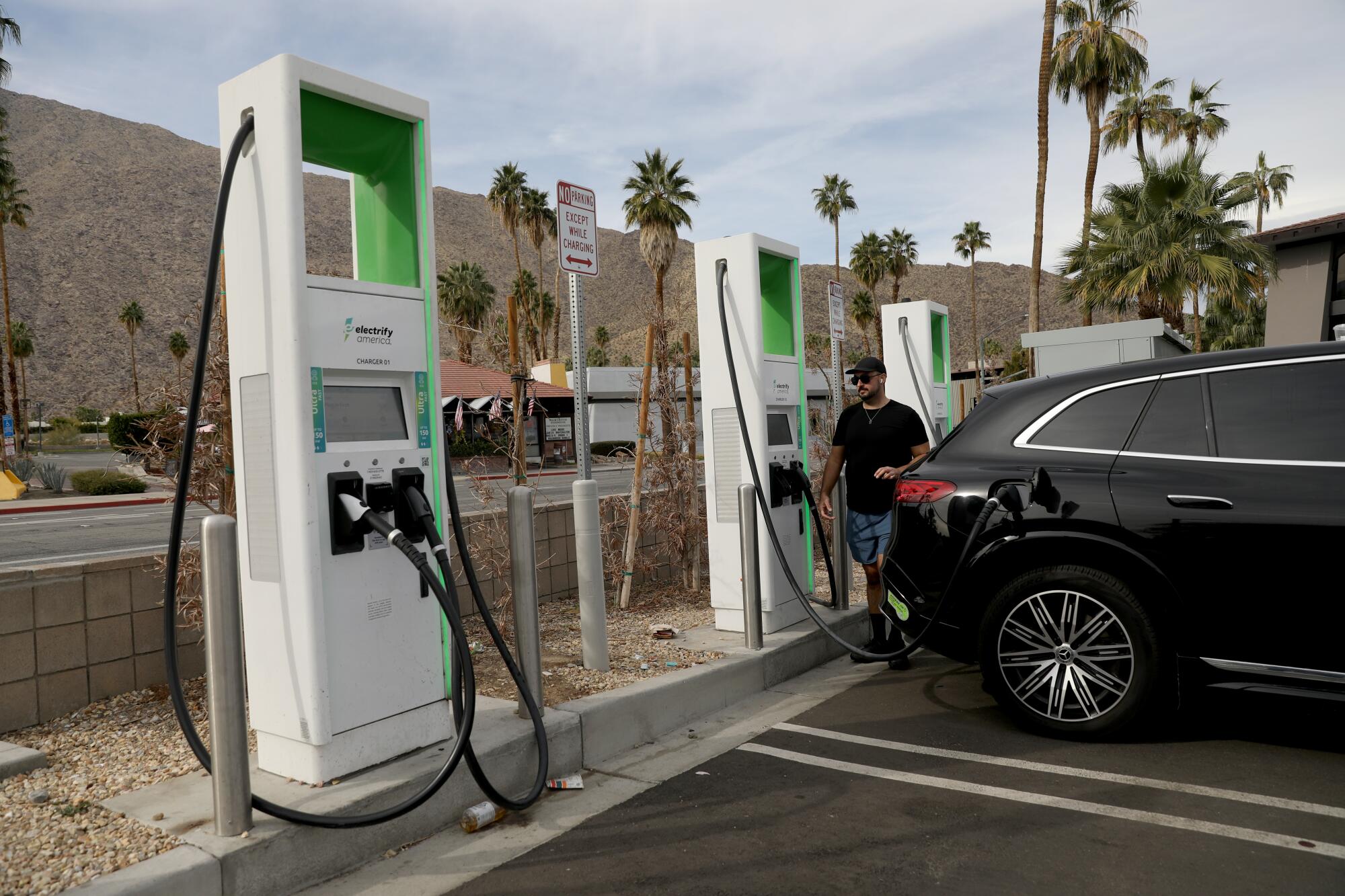What’s Driving the Growth of EV Infrastructure? Buy EV Charging news for Key Updates
What’s Driving the Growth of EV Infrastructure? Buy EV Charging news for Key Updates
Blog Article
Leading EV Charging Information: Key Updates on Infrastructure and Technology

Recent Improvements in Fast-Charging Innovation

Moreover, improvements in battery technology, including enhanced thermal administration systems and higher power density batteries, complement fast-charging capabilities. These developments mitigate the threat of battery deterioration throughout fast charging, making sure long life and efficiency for EV proprietors.
In addition, the combination of clever charging options is enhancing customer experience, enabling real-time surveillance and dynamic rates models. EV Charging news. This flexibility enables drivers to enhance billing costs and times based on grid need
As automakers proceed to purchase fast-charging networks, the collaboration between industry stakeholders is critical. Collaborations between charging station suppliers and automotive producers are leading the method for considerable insurance coverage, eventually fostering a much more durable EV environment. These developments are critical in sustaining the change to sustainable transport.
Federal Government Efforts for Billing Expansion
Federal government initiatives play an essential duty in the growth of electric automobile (EV) billing infrastructure, assisting in the transition to sustainable transportation. Different government and state programs are being carried out to improve billing access, decrease the monetary concern on consumers, and advertise the adoption of electric cars.
Significantly, the U.S. federal government has alloted significant financing through the Facilities Financial Investment and Jobs Act, which allocates $7.5 billion for EV billing network advancement across the country. This financing is intended at releasing hundreds of brand-new billing terminals, specifically in underserved locations, thus resolving range anxiety among prospective EV buyers.
Additionally, numerous states are passing regulation to enhance the permitting process for billing station setups, which is essential for speeding up release. Incentives such as tax credit reports and discounts for both customers and companies are also being introduced to urge the installment of billing facilities.
Additionally, public-private partnerships are increasingly ending up being a focus, leveraging exclusive financial investment to match government funding. These efforts highlight a collaborative technique essential for constructing a detailed and efficient EV charging network, ultimately adding to a greener and even more sustainable future.
Cutting-edge Battery Solutions Enhancing Efficiency
Reinventing the landscape of electric automobile (EV) modern technology, ingenious battery options are dramatically boosting performance and efficiency. Advances in battery chemistry, especially with lithium-sulfur and solid-state batteries, are resulting in boosted power thickness, which permits longer arrays and faster billing times. These brand-new battery types have the prospective to outperform traditional lithium-ion batteries by offering greater capacities while reducing weight, consequently boosting total automobile efficiency.
In addition, developments in battery management systems (BMS) are optimizing energy use and expanding battery life-span. Intelligent algorithms keep track of battery wellness and performance, enabling real-time modifications to charging and discharging procedures. This not just boosts the effectiveness of the battery but likewise ensures an extra lasting and trusted power resource for check it out EVs.
Moreover, the integration of reusing innovations is dealing with the environmental effect of battery manufacturing and disposal. Developments in second-life applications for EV batteries are facilitating their use in power storage space systems, adding to a round economic situation.
As these innovative battery options remain to evolve, they promise to change the EV market, making electrical lorries more appealing and available to a more comprehensive audience while sustaining international sustainability objectives.

Cooperation In Between Automakers and Charging Networks
Acknowledging the crucial demand for a durable billing infrastructure, car manufacturers are progressively collaborating with charging network service providers to improve the EV possession experience (EV Charging news). These collaborations aim to produce a seamless billing community that profits customers and supports the transition to electrical cars
Major automobile brands are signing up with forces with well established billing networks to expand their billing station coverage, guaranteeing drivers have accessibility to practical and trustworthy billing alternatives. Partnerships with networks like ChargePoint and Electrify America permit car manufacturers to integrate charging options straight into their cars' navigation systems, guiding customers to the local terminals and giving real-time accessibility updates.
Additionally, these collaborations commonly cause the advancement of fast-charging modern technologies that substantially lower the moment needed to reenergize an EV. By merging resources and competence, automakers and charging networks can introduce quicker, developing remedies that meet the growing demand for electrical flexibility.
In enhancement, joint initiatives may likewise result in even more standard charging procedures, which can ease consumer confusion and promote more comprehensive EV adoption. Overall, these strategic partnerships are essential in constructing a user-friendly and effective billing infrastructure that satisfies the demands of a broadening electrical lorry market.
Obstacles Facing EV Charging Facilities
As the electrical car market continues to grow, a number of challenges are emerging that hinder the advancement of a detailed billing framework. Among the key barriers is the not enough number of charging stations, particularly in underserved and country city locations. This void develops array anxiousness among prospective EV customers, deterring them from making the button.
In addition, the lack of standardization accountable technology makes complex the framework landscape. Variants in plug types and billing rates can develop complication for customers and raise functional intricacies for charging network operators. In addition, the combination of charging stations into existing electrical grids poses significant obstacles. Many regions encounter capability limitations, calling for considerable investments in grid upgrades to fit boosted need.
One more pressing problem is the high expense connected with the setup and maintenance of billing stations, which can be an obstacle for both private companies and public entities. Finally, regulatory obstacles and zoning constraints can postpone try here the implementation of billing facilities, hampering progression in broadening important services. Attending to these obstacles will be important for fostering a durable EV community that supports the shift to sustainable transportation.
Final Thought
Finally, the continuous improvements in EV charging innovation, supported by significant federal government campaigns and innovative battery services, are vital for the expansion and effectiveness of electric lorry facilities. Collaborations in between car manufacturers and charging providers better enhance terminal coverage, resolving the growing demand for accessible charging choices. Despite obstacles that persist within the EV charging Visit This Link landscape, these growths indicate a favorable trajectory in the direction of an extra reliable and sustainable electrical lorry environment.
Innovations in billing framework have led to the development of ultra-fast chargers capable of supplying up to 350 kW of power, substantially lowering billing times. Variants in plug kinds and billing speeds can develop complication for users and raise functional intricacies for billing network operators.In conclusion, the ongoing advancements in EV billing innovation, supported by considerable government initiatives and cutting-edge battery services, are important for the expansion and efficiency of electric car framework. Collaborations in between automakers and billing carriers further enhance station protection, attending to the expanding demand for obtainable billing choices. Regardless of obstacles that persist within the EV billing landscape, these growths symbolize a positive trajectory in the direction of an extra lasting and reliable electrical lorry ecological community.
Report this page